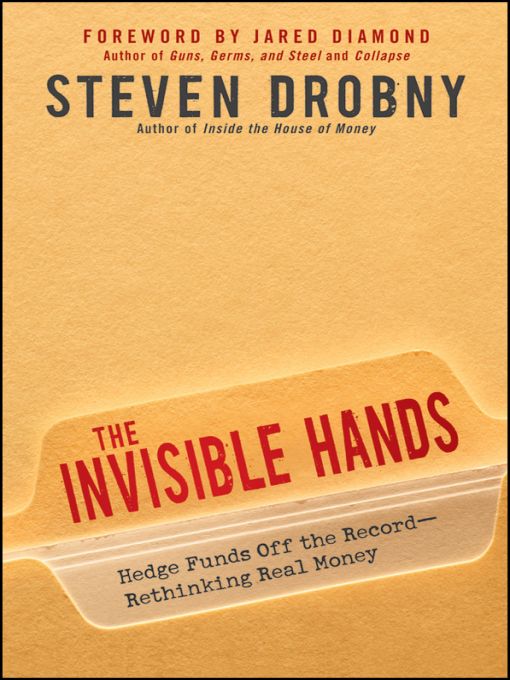Table of Contents
For the taxpayer.
The whole problem with the world is that fools and fanatics are always so certain of themselves, but wiser people so full of doubts.
Bertrand Russell
Investors are the big gamblers. They make a bet, stay with it, and if it goes the wrong way, they lose it all.
Jesse Livermore
Only after disaster can we be resurrected.
Tyler Durden
Argue for your limitations and theyre yours.
Richard Bach
Foreword
Question: What is the difference between a Peruvian peasant farmer and a Harvard or Yale endowment manager?
Answer: The peasant is the one who understands risk-sensitive investing and sound investment goals.
That question and answer illustrate why I, as a mere impractical academic historian, find the practical world of investment fascinating.
I got my first peek into the mystery-wrapped world of hedge funds several years ago, when Steven Drobny invited me to give the opening address at his annual conference for hedge fund managers. That initial peek aroused my curiosity. It led me to return to his conference in the following year as an observer, to meet some of Stevens colleagues and invited managers, to read Stevens previous book, Inside the House of Money, and to enjoy brunches with Steven from time to time, where we talk about anything from hedge funds and raising children to fixing the world.
One reason why I became fascinated in the world of investing was the parallels that I saw between investing and history. The issue of risk is acute in both of those spheres. Endowment and hedge fund managers evaluate upside and downside risk to the money they manage for other people, and they make or lose money as a result of those evaluations. The historical and modern peoples whom I study assess upside and downside risk to their own resources that they manage, and they and their families survive or die as a result of those evaluations.
For example, in the Middle Ages, the Norse on the island of Greenland, descended from Viking settlers who colonized Greenland in the year AD 984, made decisions each year about how many of their cows to cull in the fall. They knew the amount of hay that they had harvested during the previous summer, and knew the length of each individual winter (hence the demand for hay to feed the cows over the winter) over many past decades, but did not know the length of the particular winter lying ahead. If they still had hay left in the spring, that meant that they had culled a certain unnecessary quantity of cows, and they could have brought more cows through the winter, then produced more milk, cheese, and meat as a result and been less hungry the following year. If they instead found themselves running out of hay during the winter, that meant they had culled too few cows in the fall, meaning they would have to start sacrificing cows in the winter, ending up with fewer cows in the spring than if they had culled more cows already in the fall.
For about 376 years, the Greenland Norse made those annual decisions about risk-sensitive investment in cow herds sufficiently well that they flourished. But around year AD 1360 there was a particularly cold series of winters for which their hay gamble proved to be a bad miscalculation, with the result that all their cows died during one winter, and all of the thousand or so Norse of Greenlands Western Settlement starved to death in the late winter. Hedge fund managers will undoubtedly empathize with the dilemma that the Norse faced, and with their temptation to be greedy and to invest in many cows in their winter herd. But managers will be grateful, when their own risk calculations prove to be in error, that they themselves lose only their investors money and dont lose their own lives.
Another reason why I was fascinated with what I learned about the world of investments was the parallels between investment managers and modern farming peoples. For instance, studies of modern Peruvian peasants resolved a mystery that long puzzled medieval historians, and that should have puzzled college investment managers. Each medieval peasant family didnt cultivate one large plot of ground; instead, they cultivated up to several dozen little strips of land scattered in several different directions from their hut, despite the obvious inefficiency of wasting time on traveling and carrying supplies between strips, as well as the waste of land inevitably left uncultivated at boundaries between adjacent strips belonging to different peasants. A possible explanation for the peasants apparently irrationally stupid behavior was that they were practicing the virtue of diversification praised by modern financial managers: dont put all your eggs in one basket but instead diversify your portfolio. In any given year, all the strips in a single field may fail because of pest infestation, local climate, or thieves. You (the peasant family) are less likely to starve if you plant different scattered strips.
That idea of diversification is plausible, but only recently did economic historians and agronomists discover how sophisticated are the underlying calculations performed unconsciously by peasants. Modern Peruvian peasants scatter their strips of land as did medieval English peasants. Any individual Peruvian peasant owns between 9 and 26 different strips, whose yields of potatoes and other crops vary from year to year independently of each other and partly unpredictably. The peasants cant store significant quantities of potatoes from one year to the next; their food needs have to be satisfied by the current years harvest. In analogy to the medieval Norse farmers need for hay, the modern Peruvian peasants must succeed in obtaining a certain minimum potato harvest amounting to about 680,000 calories in every single year, otherwise they and their families end up starving. For 20 different peasants owning a total of 488 strips, the anthropologist Carol Goland measured the potato yields in successive years, then used those measured years to calculate the yield that each peasant would have harvested each year by cultivating only 1, or 2, or 3... etc. strips, with total area held constant but with yield per acre equal to the value for each possible combination of the 1, 2, 3 etc. actual strips. She also measured the calories invested in travel between 1, 2, 3...strips, in order to obtain the net calories remaining to the peasant for each combination.
Four interesting conclusions emerged from Golands study. First, the long-term time-averaged potato harvest decreased with subdivision of the peasants land, in agreement with the expectations of horrified western agronomists who urged the peasants to consolidate their strips, and for several reasons including wasted travel time. Second, the year-to-year variance in potato harvest decreased with increasing subdivision of the peasants land, as expected from the principle dont put all your eggs in one basket. But, because of that variance, the third conclusion was that the frequency of the years with a harvest so low as to cause starvation was highest for a single strip and decreased with subdivision to reach zero at a certain number of strips varying between 4 and 13, depending on the particular peasants land. Finally, each individual peasant planted 2 or 3 strips more than the number required to reduce the risk of starvation to zero.













